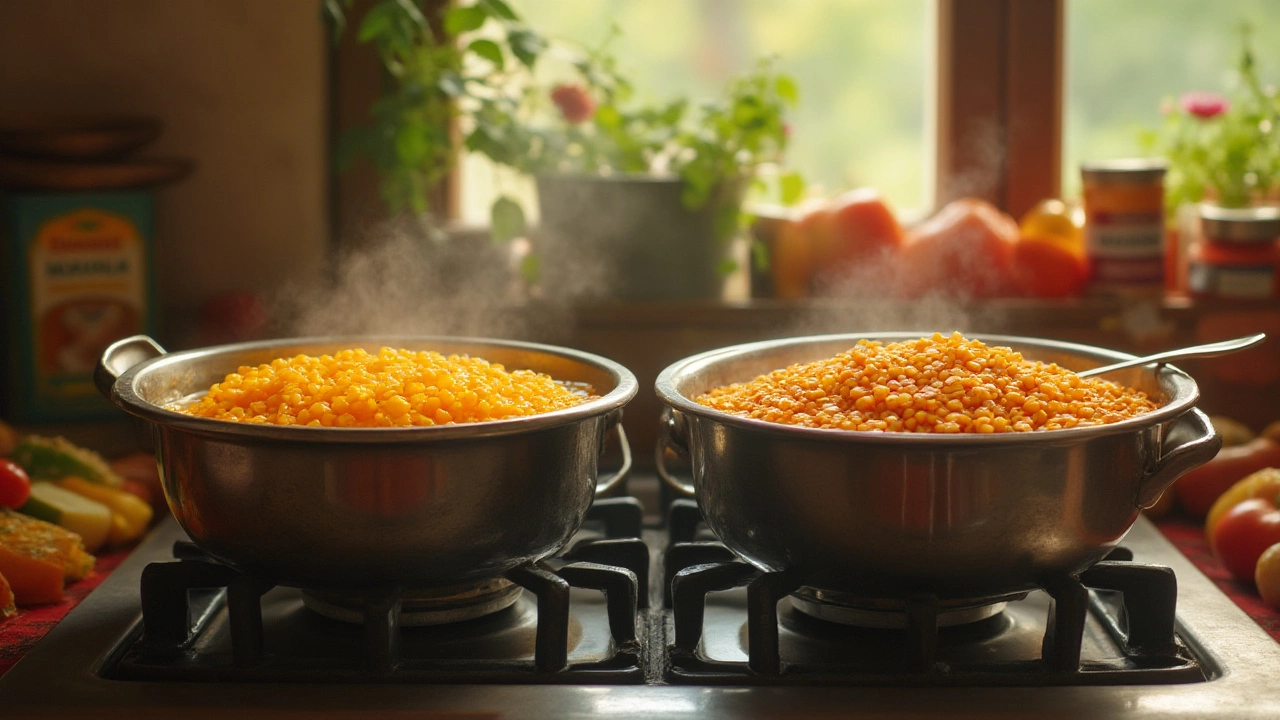Dal Soaking: Boost Flavor, Nutrition, and Speed
When working with Dal Soaking, the practice of soaking dried dal in water before cooking to improve texture and nutrition. Also known as pre‑soaking lentils, it helps reduce cooking time and enhance digestibility. You’ll notice softer beans, less gas, and a brighter taste. Dal soaking isn’t just a trick; it’s a small step that changes the whole dish. Below we’ll walk through why it works, how long to soak, and which dal varieties need extra love.
Why Soak Dal?
First, dal is a legume packed with protein, fiber, and iron. Dal, a staple grain‑like pulse in Indian cuisine contains anti‑nutrients like phytic acid that bind minerals. Soaking triggers enzymatic activity that breaks down these compounds, making the nutrients more available – a classic win for digestion. At the same time, water penetrates the seed, softening cell walls and cutting cooking time by half or more. That means less fuel, less kitchen heat, and a faster dinner.
Another side‑effect is sprouting. If you keep soaked dal in a warm spot for 8‑12 hours, tiny shoots appear. Sprouting, the germination of soaked pulses boosts B‑vitamins and antioxidant levels, turning a simple dal into a super‑charged protein source. Many home cooks use sprouted moong or mung beans in salads and stir‑fries for that extra crunch.
Now that we’ve covered the science, let’s talk timing. Most small dal – like masoor or toor – need 30‑60 minutes. Bigger varieties such as chana dal or urad benefit from 2‑4 hours. If you’re in a rush, a quick‑soak method (boiling dal for 2‑3 minutes, then letting it sit for 30 minutes) works well, but remember the texture may be slightly firmer.
Cooking technique matters too. After soaking, discard the water – it contains dissolved phytic acid and excess starch that can make the dal gummy. Rinse well, then add fresh water or broth. Adding a pinch of turmeric not only adds color but also has anti‑inflammatory benefits. For a smoother texture, some chefs blend a handful of soaked dal into a paste before simmering.
Beyond the basic benefits, soaking impacts flavor. Soaked dal absorbs spices more evenly, so your cumin, mustard seeds, or ginger will coat each grain uniformly. This is why classic dishes like dal tadka or dal makhani taste richer when the lentils have been pre‑soaked. In fact, the longer you soak (up to 12 hours), the more the gentle fermentation can develop subtle sour notes that deepen the overall profile.
Finally, consider the health angle. Protein, the building block found abundantly in dal becomes easier for the body to digest after soaking, reducing bloating for many people. Coupled with lower cooking time, you preserve heat‑sensitive nutrients like folate. So whether you’re counting macros, managing gut health, or just want a quicker meal, dal soaking is a smart, low‑effort habit.
Below you’ll find a curated list of articles that dive deeper into dal nutrition, compare dal to other legumes, and share specific recipes that showcase the power of a well‑soaked pulse. Explore the tips, tricks, and science to make every dal dish shine.

What Happens If You Don't Soak Dal? Health, Nutrition, and Cooking Explained
Ever wondered if you can skip soaking your dal? Here’s what actually happens when you don’t soak lentils, including health effects, cooking time, and taste.